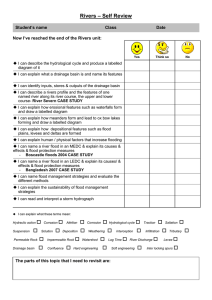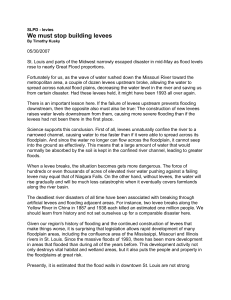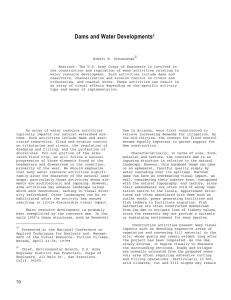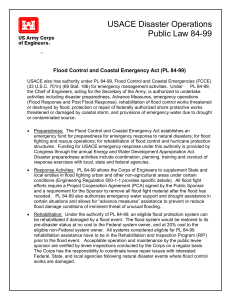Rivers - geographylwc.org.uk
advertisement
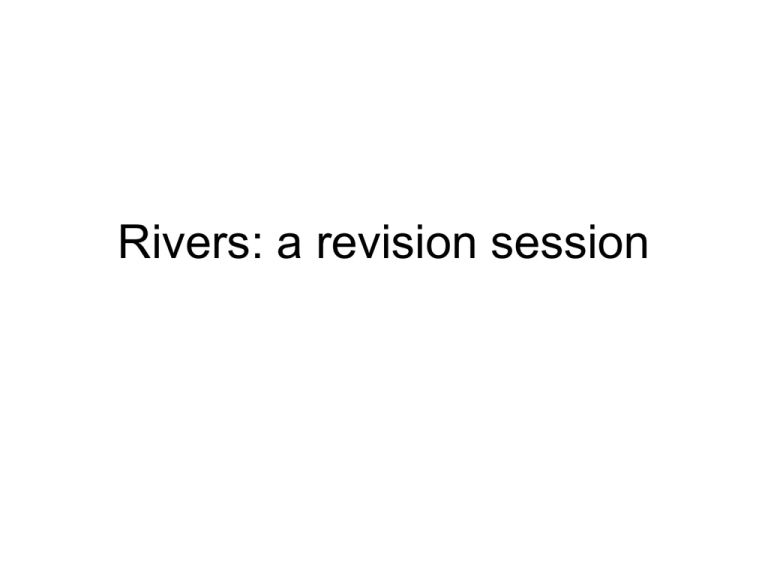
Rivers: a revision session River facts River landforms are formed by erosion, transportation and deposition The main processes of river erosion are: abrasion, hydraulic action, attrition and solution. These operate best at times of flood. A river’s load is transported by solution, suspension, saltation and traction Parts of a river’s course A river can be subdivided into its upper, middle and lower course. Each part will have distinctive landforms and characteristics. • Upper: potholes, V shaped valleys, waterfalls and interlocking spurs. • Middle: slip off slopes, river cliffs, meanders and asymmetric cross section • Lower: flood plains, levees, ox bow lakes and deltas Flooding • Rivers will flood when the discharge or flow is greater than the channel can cope with. • Deforestation and the building of roads and houses on the flood plain increases surface runoff and reduces infiltration, increasing flood danger. • Flooding can be reduced by building reservoirs, levees, and relief channels. • Straightening the channel will increase the Flood management Two case studies : • MEDC; Boscastle causes effects and ‘solutions • LEDC; Mozambique, causes, effects and ‘solutions’. Future • There has been a move away from ‘hard’ solutions, e.g. the construction of levees to ‘soft’ solutions e.g. flood plain zoning. • This is particularly true in LEDCs where they cannot afford the costs of large schemes







